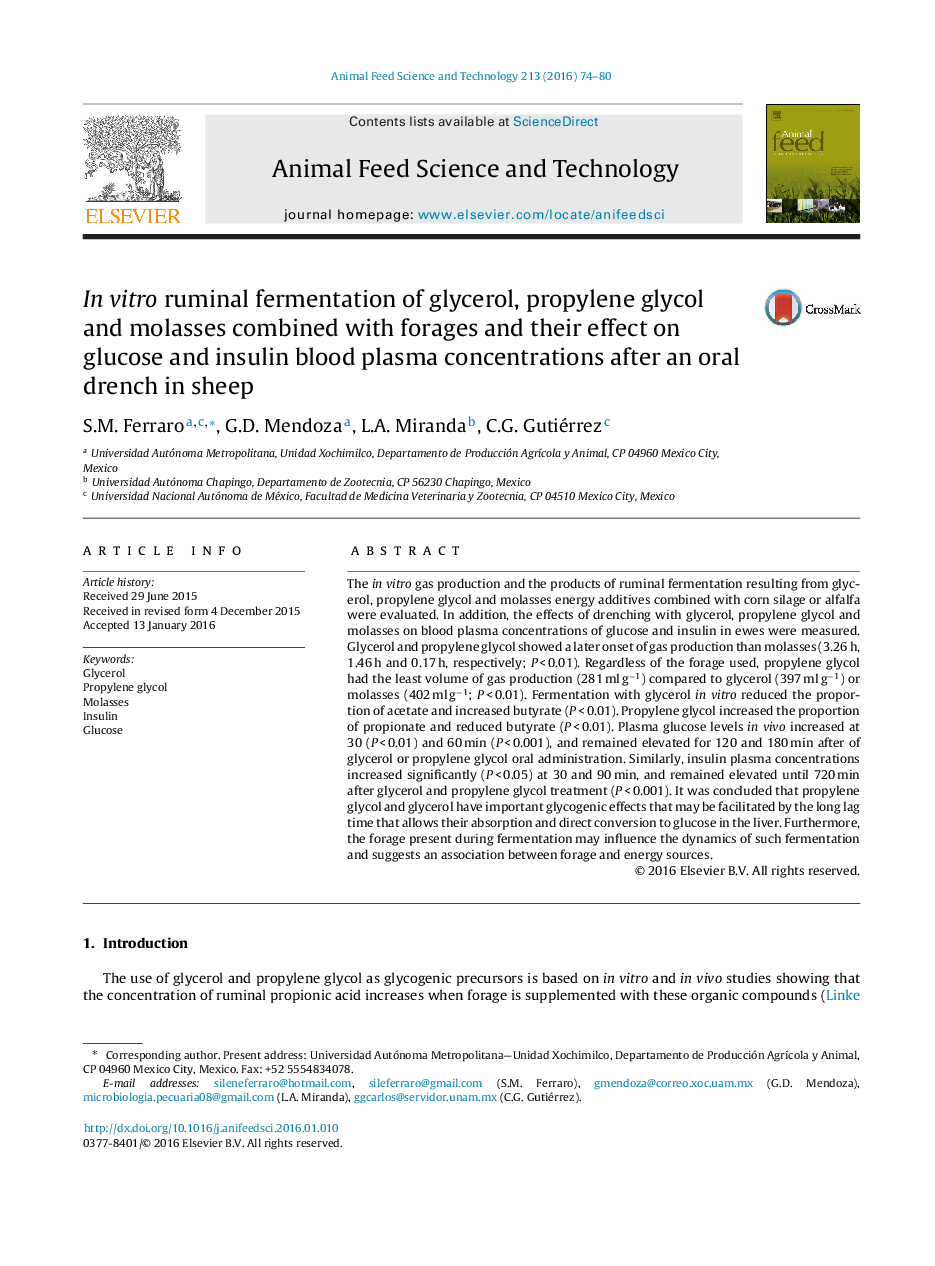| کد مقاله | کد نشریه | سال انتشار | مقاله انگلیسی | نسخه تمام متن |
|---|---|---|---|---|
| 2419351 | 1552372 | 2016 | 7 صفحه PDF | دانلود رایگان |
• The longer time to begin fermentation of glycerol allows for its absorption and its direct use for glucose production in the liver.
• Propylene glycol and molasses increased proportion of propionate with the consequent reduction of the other volatile fatty acids.
• Glycerol and propylene glycol increased glucose and insulin concentration in the plasma of sheep, whereas molasses did not.
The in vitro gas production and the products of ruminal fermentation resulting from glycerol, propylene glycol and molasses energy additives combined with corn silage or alfalfa were evaluated. In addition, the effects of drenching with glycerol, propylene glycol and molasses on blood plasma concentrations of glucose and insulin in ewes were measured. Glycerol and propylene glycol showed a later onset of gas production than molasses (3.26 h, 1.46 h and 0.17 h, respectively; P < 0.01). Regardless of the forage used, propylene glycol had the least volume of gas production (281 ml g−1) compared to glycerol (397 ml g−1) or molasses (402 ml g−1; P < 0.01). Fermentation with glycerol in vitro reduced the proportion of acetate and increased butyrate (P < 0.01). Propylene glycol increased the proportion of propionate and reduced butyrate (P < 0.01). Plasma glucose levels in vivo increased at 30 (P < 0.01) and 60 min (P < 0.001), and remained elevated for 120 and 180 min after of glycerol or propylene glycol oral administration. Similarly, insulin plasma concentrations increased significantly (P < 0.05) at 30 and 90 min, and remained elevated until 720 min after glycerol and propylene glycol treatment (P < 0.001). It was concluded that propylene glycol and glycerol have important glycogenic effects that may be facilitated by the long lag time that allows their absorption and direct conversion to glucose in the liver. Furthermore, the forage present during fermentation may influence the dynamics of such fermentation and suggests an association between forage and energy sources.
Journal: Animal Feed Science and Technology - Volume 213, March 2016, Pages 74–80
